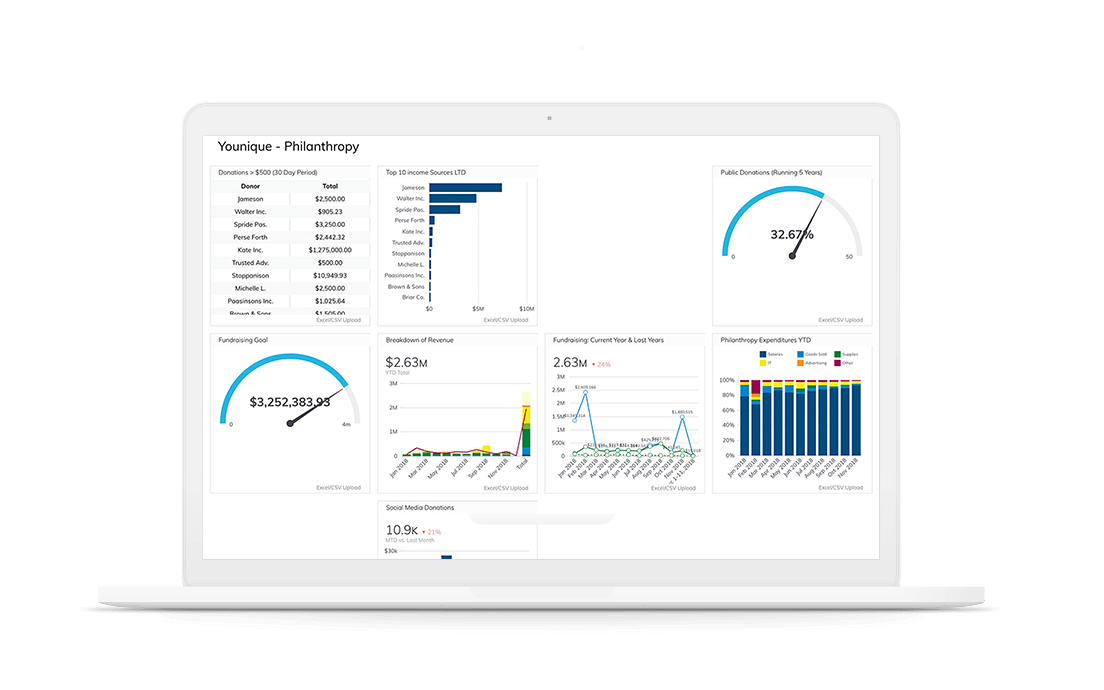To get where you want to go, you need a clear sense of direction. This is as true for your business as it is for a road trip. That sense of direction comes from having goals in place, targets that you want to hit, each one a step towards your ultimate success.
But how do you set the right goals for your team? After you set them, how do you know you’re moving in the right direction? With the right tools—smart goals and KPIs—you can make sure your team is empowered to achieve.

Set SMART Goals
As you go through the process of setting goals and objectives for your team, you can evaluate them using SMART, a framework that helps refine goals for maximum effectiveness. SMART is an acronym that stands for Specific, Measurable, Assignable, Relevant, and Time-bound. Each of these criteria can help you set strategic goals and improve your business performance.

S is for Specific
The power in creating specific goals is that they drive action. Consider this: Instead of “being more successful,” what if you aimed to sign up 1000 new customers? A goal like that starts to give you a plan of action and helps you focus your activities towards achieving it.
The Younique Foundation uses specific goals to achieve important objectives: At least 33% of their donations must come from external sources to maintain their non-profit status with the Federal Government. They monitor their donations KPI closely on their Philanthropy Dashboard to ensure they keep the right distribution.
How do I make my goals more specific?
The best way to make your goals more specific is to start asking questions:
- What do I want to achieve?
- How do I want to do it?
- When do I want to reach it?
- Who will be involved?
- Why am I really trying to accomplish this?
Answering these questions will not only help you refine your goal, they’ll help to solidify your commitment and increase your motivation.

M is for Measurable
When you measure a goal, you can quantify its progress and see whether you’ve actually achieved anything. Measurable goals are also motivating goals.
Powerblanket uses data to motivate employees. Because performance data is shared openly, employees know what’s expected of them, can see how they’re doing, and are able to adjust their behavior in response to the data. “You get what you measure,” CEO Brent Reddekopp says.
How do I measure my goals effectively?
When you’re figuring out how to measure your goals, it’s important to consider your key performance indicators (KPIs). There’s plenty of data you can track, but ask yourself: Is this a true performance measure?
To measure the effectiveness of your social media posts, you may track how many followers you gain each week across social platforms. However, that metric doesn’t necessarily tell you whether your content is engaging.
Instead, find your KPIs—the metrics that really measure your performance—like measuring increases in likes, comments, and shares. For an extra boost of effectiveness, track those metrics using a business intelligence platform like Grow. Data visualizations give life to your goals and make progress tangible for your whole team.

A is for Assignable
Goals—and the metrics that measure them—should be assigned to one person who can then make decisions, direct the efforts of the team, and follow-up to make sure progress is being made. This is less about having someone on the hook for failure, and more about giving the goal a champion to make sure it crosses the finish line.
A great strategy is to assign not only the overarching goal, but also those supporting it. For example, your VP of Marketing may “own” a certain inbound lead target. To accomplish it, she can make assignments to the digital advertising, content, and social media teams to reach supporting goals within their areas. She can then track them all together on a business dashboard to see how each team goal is contributing to the shared objective.

R is for Relevant
To meet the fourth SMART goal criteria, you may need to do some soul searching because relevance is all about the big picture: What do you really want to accomplish? What is your why?
Maybe you want to support a charitable cause, or build an internationally-recognized brand, or create a company culture that prioritizes work-life balance. Whatever it is, the big goals you set for your business should be relevant to that ultimate purpose. Any goal that drives you away from it should probably be reconsidered.

T is for Time-bound
When you don’t have a deadline attached to your goals, it can be easy to put off the work required to achieve them. That’s why it’s so important for business objectives to be time-bound. Make sure every goal you set has a target completion date.

SMART Goals, SMART KPIs
You can use SMART criteria to set smarter goals, but the same principles can be applied to your KPIs—the metrics you use to measure each of your goals:
- Specific: Refine your KPI to give you the best information about your progress. So, for example, you could track “New MRR This Month vs. Last Month” instead of just “Total Revenue.”
- Measurable: KPIs should be measured frequently enough to help you stay on track, usually on a daily or weekly basis.
- Assignable: The goal owner is also responsible for the KPI—that’s what makes it a key performance indicator.
- Relevant: Rather than being relevant to your “why,” the KPI should be directly connected to the goal. (This should be easy if your goal is sufficiently specific.)
- Time-bound: In addition to your deadline, build milestones into your KPI so you can stay on track.
When you pair smart goals with smart KPIs, you have the direction and the tools to keep you on the path to success.







